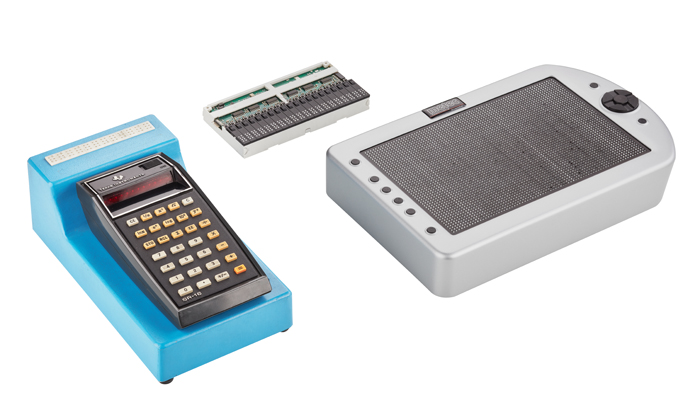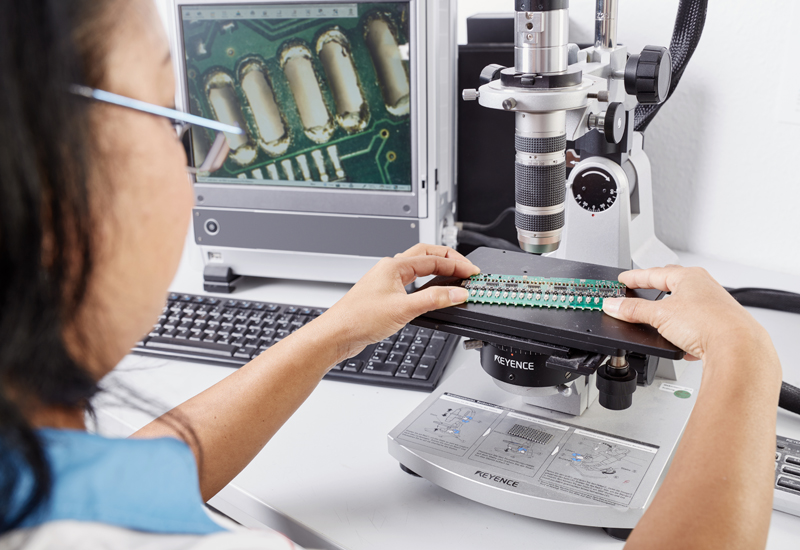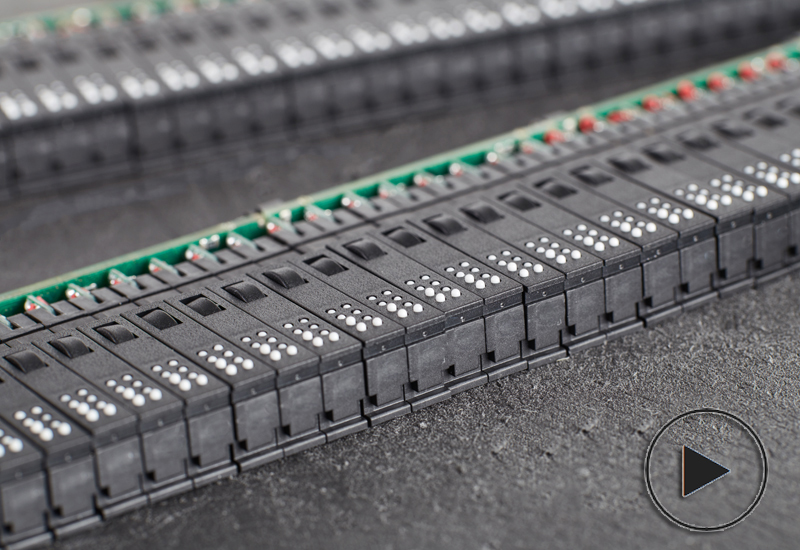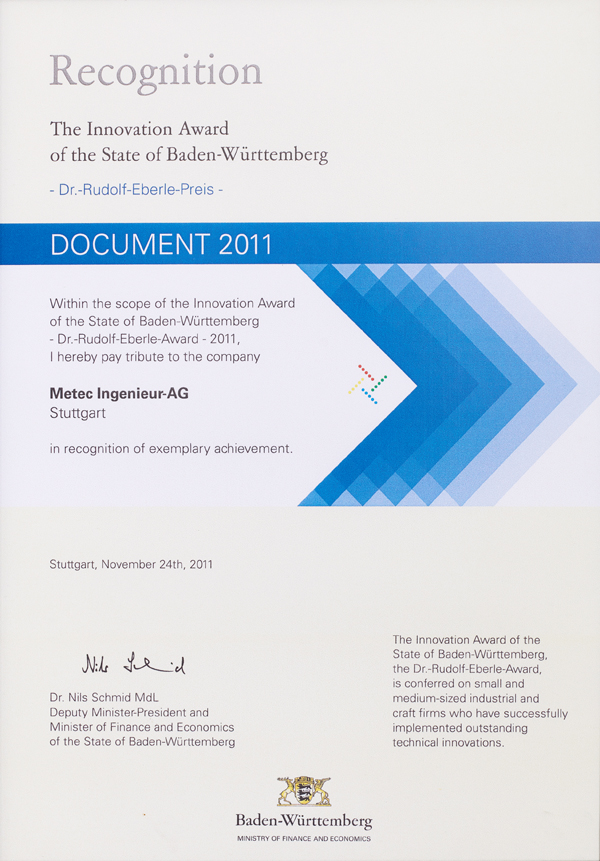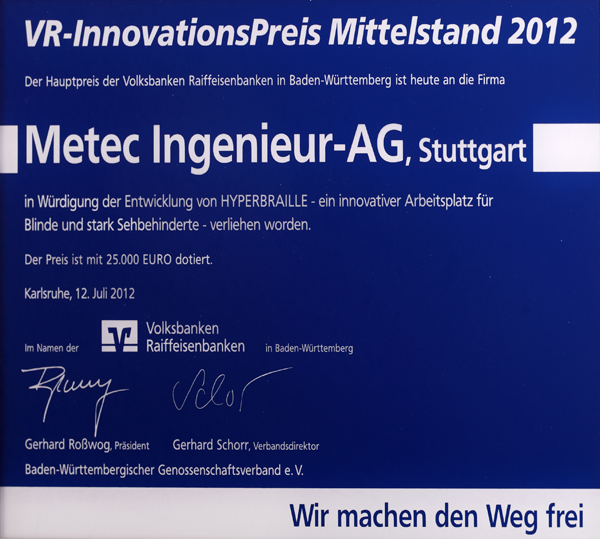From Braille script to Braille line
In 1825 Louis Braille, a Frenchman, invented the Braille script with 6 dot letters. Step by step printing Braille books was developed for the Blind. Braille typewriters were built, and in 1975 metec delivered the first pocket calculator with Braille output. Today Braille displays show the content of a computer screen line by line in Braille characters thus enabling blind people to read and edit word documents or surf in the world wide web.
Use and functioning of the Braille line
The Braille line is an output device for computers. It shows the signs of the screen in tactile, electronically refreshable Braille characters. Thus blind persons can work with a computer independently.
Each single dot of a character is raised or deleted by electronic activation of a piezo actuator. Modern Braille lines have 8 dot characters, thus allowing 256 signs (ASCII or UNI-Code character set) without limitations.
The Braille line and the computer are mainly connected via a USB port, sometimes via Bluetooth or WLAN.
In most cases the lines are driven through a "Screenreader Software", which translates the screen content and also supports by speech output. A Braille line has between 12 and 80 cells. This is the reason why only a small part is shown - maximum 80 signs of a screen line. With the help of routing keys the shown part can be scrolled up, down, right or left.
Modern Braille lines have the so called cursor-routing. Above each Braille element there is a small button. When pressing it, the cursor on the screen is moved to the corresponding position. This makes especially sense if the text read shall be corrected on the spot.
Since the production of Braille lines is technically very complex and they are produced only in small quantities, the production costs are accordingly high. The long life expectancy and high utility value of metec Braille lines, however, justify the purchase.





